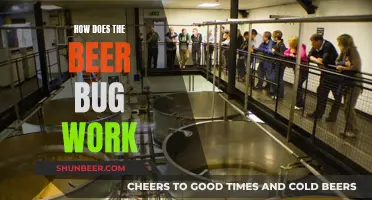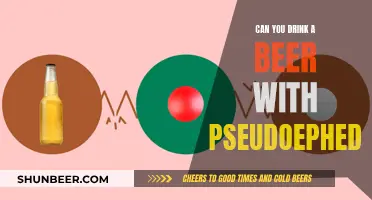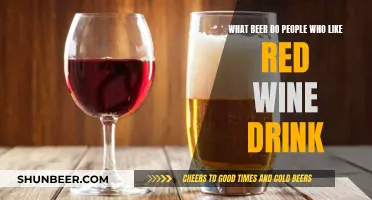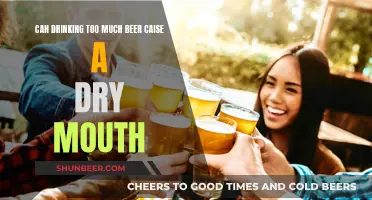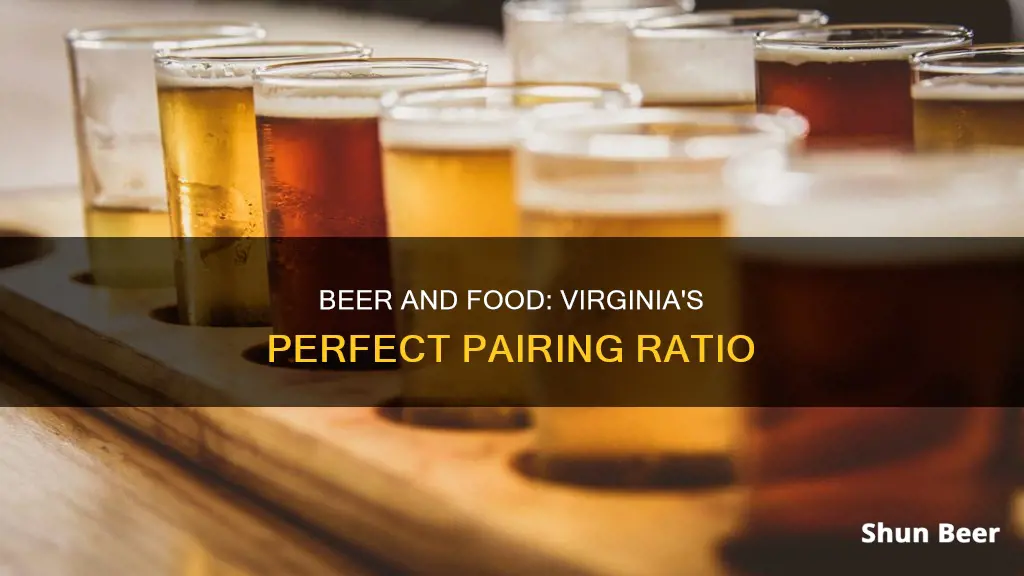
Virginia's food-to-beverage ratio has been in place since the legalization of liquor sales at dining establishments, though it has been modified over the years to exclude beer and wine. The ratio is calculated as: Food / (Food + Mixed Beverages) = 45% or more. This means that a minimum of 45% of the total gross sales must be from food and non-alcoholic beverages, with alcohol sales making up no more than 55% of sales. This ratio is designed to prevent the operation of full-fledged bars in the state, with monthly sales of food prepared and consumed on the premises needing to be at least $4,000, of which a minimum of $2,000 must be from meals with substantial entrees.
| Characteristics | Values |
|---|---|
| Food-Beverage Ratio | A minimum of 45% of total gross sales must be from food and non-alcoholic beverages |
| Alcohol Sales | Should not exceed 55% of total gross sales |
| Monthly Food Sales | Must be at least $4,000, with no less than $2,000 from meals with substantial entrees |
| Food-Beverage Ratio Calculation | Food / (Food + Mixed Beverages) = 45% or more |
| Food Definition | Food and non-alcoholic beverages |
| Mixed Beverages Definition | Liquor and mixed drinks |
| Excluded from Ratio | Beer and wine |
| MBAR | Mixed Beverage Annual Review – a report documenting food and beverage sales of mixed-beverage licensees, to be submitted annually to Virginia ABC |
What You'll Learn
- The food-to-beverage ratio in Virginia requires a minimum of 45% of total sales to be food and non-alcoholic drinks
- Alcohol sales in Virginia cannot exceed 55% of total sales
- Beer and wine are not included in the food-to-beverage ratio calculation
- The food-to-beverage ratio was created to prevent the return of bars and saloons in Virginia
- Restaurants in Virginia can face financial penalties and license revocation for violating the food-to-beverage ratio

The food-to-beverage ratio in Virginia requires a minimum of 45% of total sales to be food and non-alcoholic drinks
The food-to-beverage ratio in Virginia, also known as the Mixed Beverage Annual Review (MBAR), is a requirement for mixed-beverage licensees, including restaurants, caterers, and clubs. This ratio stipulates that a minimum of 45% of their total gross sales must come from food and non-alcoholic drinks, while alcohol sales should not exceed 55%. This ratio is calculated over the course of the license year and does not include beer and wine sales.
Licensees must submit an MBAR report annually to the Virginia ABC, documenting their food and beverage sales. This report includes categories such as food and non-alcoholic beverage sales, mixed beverage sales, wine and beer sales, and miscellaneous sales. Failing to meet the ratio requirement can result in civil penalties, license suspension, or revocation.
The food-to-beverage ratio in Virginia has its roots in the Prohibition era, aiming to prevent the return of bars and saloons. While it has been modified over the years, it continues to impact the operations of dining establishments in the state. Some lawmakers and business owners have advocated for changing or abolishing the ratio to allow for more liquor sales and accommodate different business models, especially those specialising in high-end spirits.
To ensure compliance, Virginia ABC conducts inspections and visits during non-traditional meal times. They advise licensees on adhering to the "45-percent rule" and emphasise the importance of proper documentation and record-keeping to avoid fines and license-related issues.
Beer and Hydroxyzine: Safe After 18 Hours?
You may want to see also

Alcohol sales in Virginia cannot exceed 55% of total sales
In Virginia, alcohol sales and regulation are controlled by the Virginia Alcoholic Beverage Control Authority (ABC). The state is one of 17 control states, which means that the government regulates how distilled spirits are sold.
Virginia's food-to-liquor ratio, or food-beverage ratio, is a mechanism that makes it impossible to have full-fledged bars in the state. The ratio is a remnant of the Prohibition movement of the early 20th century, which argued that alcohol was the source of social ills such as homelessness, poverty, and divorce.
The current law states that a minimum of 45% of the total gross sales of mixed-beverage licensees must be from food and non-alcoholic beverages. Alcohol sales, including beer, wine, and liquor, should comprise no more than 55% of these sales. This ratio is calculated over the course of the license year, not monthly.
To be in compliance with the state's regulations, "food" refers to food and non-alcoholic beverages, while "mixed beverages" refer to liquor and mixed drinks. Wine and beer are not included in the ratio calculation.
Licensees, including restaurants, caterers, and clubs, are required by law to submit a Mixed Beverage Annual Review (MBAR) to Virginia ABC once a year on the anniversary of the issuance of their license. This report documents the food and beverage sales of mixed-beverage licensees.
The food-beverage ratio is paramount for operating a mixed-beverage business in compliance with Virginia's alcohol regulations. It is important to meet this requirement to avoid fines and suspension or revocation of a business's license.
Beer and Diabetes: What Diabetics Need to Know
You may want to see also

Beer and wine are not included in the food-to-beverage ratio calculation
In Virginia, beer and wine are not included in the food-to-beverage ratio calculation. This is because the ratio specifically refers to "food" and "nonalcoholic beverages" as one category, and "mixed beverages" or "liquor" as the other.
The food-to-beverage ratio, also known as the food-to-liquor ratio, was implemented to prevent the return of bars and saloons after Prohibition was repealed in 1933. Initially, beer and wine sales were counted towards the ratio, but this changed in 1990. Now, the ratio is calculated as follows: Food / (Food + Mixed Beverages) = 45% or more. This means that a minimum of 45% of total gross sales must be from food and nonalcoholic beverages, while alcohol sales can make up no more than 55% of these sales.
The food-to-beverage ratio is a requirement for mixed-beverage licensees, which include restaurants, caterers, and clubs. These licensees are required to submit a Mixed Beverage Annual Review (MBAR) to Virginia ABC once a year, documenting their food and beverage sales. If they fail to meet the ratio requirement, they may face civil penalties, license suspension, or revocation.
While the ratio is intended to curtail excessive alcohol consumption, some have argued that it does not effectively serve this purpose. Additionally, it has been criticized for creating a stealth tax on food, as restaurants may raise food prices to compensate for increases in liquor prices. There have been several attempts to amend or repeal the law, including through the 2024 Virginia Senate Bill 168, which proposed reducing the food-to-beverage ratio for certain restaurants and abolishing it for those with monthly food sales above $10,000.
Beer Drinking and Liver Damage: What's the Link?
You may want to see also

The food-to-beverage ratio was created to prevent the return of bars and saloons in Virginia
Virginia's food-to-beverage ratio was created in the wake of the Prohibition era, which banned the manufacturing, selling, and transporting of liquor across the United States from 1920 to 1933. Although Virginia was never truly a dry state, it did adopt the Alcoholic Beverage Control (ABC) Act after Prohibition was repealed in 1933. This Act limited spirit sales to state-run liquor stores to prevent the return of bars and saloons, which were seen as sources of social ills such as homelessness, poverty, and divorce.
In the 1960s, lawmakers began considering changes to the ABC Act to allow liquor sales in licensed restaurants. In 1968, the law was revised to permit the sale of spirits in licensed restaurants in localities that adopted referendums. However, due to public concerns about the resurgence of saloons, the food-to-beverage ratio was enacted to limit liquor sales to full-service dining establishments. Initially, the ratio required more food sales than alcoholic beverage sales, with beer and wine sales counting towards the ratio and appetizers and desserts not included as food sales.
Over the years, the ratio has been modified, and in the 1980s, Virginia adopted the current 45% food-to-55% drink ratio, allowing more food items to be counted. Beer and wine sales were also removed from the ratio, and establishments serving only liquor were effectively banned. This ratio has remained unchanged, despite shifting consumer preferences and the growth of the high-end craft cocktail movement.
The food-to-beverage ratio has faced criticism for prioritizing cronyism over consumers and creating a stealth tax on food. It has been called a "zombie law" that has repeatedly survived efforts to reform or repeal it. The ratio also creates a complex compliance process for restaurants, which must incur additional costs for bookkeeping and compliance guidance to avoid penalties and license revocation for violations.
Despite the changing landscape of alcohol laws in Virginia, the food-to-beverage ratio remains a vestige of the Prohibition era, intended to curb excessive alcohol consumption and prevent the return of bars and saloons.
Dialysis and Root Beer: Is It Safe to Drink?
You may want to see also

Restaurants in Virginia can face financial penalties and license revocation for violating the food-to-beverage ratio
Restaurants in Virginia must adhere to a specific food-to-beverage ratio, with serious consequences for non-compliance. This ratio, which excludes beer and wine, is a requirement for mixed-beverage licensees, including restaurants, caterers, and clubs. To maintain their licenses and avoid penalties, these establishments must ensure that a minimum of 45% of their total gross sales come from food and non-alcoholic beverages, with alcohol sales not exceeding 55%. Monthly food sales must also meet a minimum threshold of $4,000, with at least $2,000 coming from meals with substantial entrees.
The Virginia Alcoholic Beverage Control (ABC) enforces these regulations, and non-compliance can result in financial penalties, license suspension, or even license revocation. To assist businesses in complying with the food-to-beverage ratio, the Virginia ABC provides resources such as special agents who conduct inspections and offer advice. These agents may visit during non-traditional meal times to ensure that food sales are conducted properly and that sufficient food is stocked in storage facilities.
The food-to-beverage ratio has evolved over time, reflecting changes in Virginia's alcohol laws. Initially, the ratio required more food sales than alcoholic beverage sales, and beer and wine sales were included in the calculation. However, in the 1980s, the ratio was adjusted to the current 45-55 split, and beer and wine were excluded from the calculation. Despite ongoing debates and efforts to amend or repeal the law, the ratio has remained unchanged for several years.
The ratio's origins can be traced back to the Prohibition era, when concerns about excessive alcohol consumption and the return of saloons influenced Virginia's alcohol regulations. While some view the ratio as a necessary measure to promote moderation, others argue that it is outdated and limits the economic potential of the state's dining and beverage industry.
To summarize, restaurants in Virginia must take the food-to-beverage ratio seriously to avoid financial penalties and license-related issues. By understanding the requirements and working closely with the Virginia ABC, establishments can ensure they remain compliant and contribute to the state's economic well-being.
Heart Surgery and Diabetes: Can Beer Be Consumed?
You may want to see also
Frequently asked questions
The food-to-drink ratio in Virginia is 45% food to 55% alcohol.
"Food" refers to food and non-alcoholic beverages. "Mixed beverages" means liquor and mixed drinks. Wine and beer are not included in the ratio calculation.
The formula is: Food / (Food + Mixed Beverages) = 45% or more.
Restaurants that violate the ratio can face license revocation and financial penalties.
No, to-go items may not be included in the food and non-alcoholic beverage sales.


